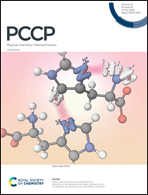Rubrene single crystal solar cells and the effect of crystallinity on interfacial recombination†
Abstract
Single crystal studies provide a better understanding of the basic properties of organic photovoltaic devices. Therefore, in this work, rubrene single crystals with a thickness of 250 nm to 1000 nm were used to produce an inverted bilayer organic solar cell. Subsequently, polycrystalline rubrene (orthorhombic, triclinic) and amorphous bilayer solar cells of the same thickness as single crystals were studied to make comparisons across platforms. To investigate how single crystal, polycrystalline (triclinic-orthorhombic) and amorphous forms alter the charge carrier recombination mechanism at the rubrene/PCBM interface, light intensity measurements were carried out. The light intensity dependency of the JSC, VOC and FF parameters in organic solar cells with different forms of rubrene was determined. Monomolecular (Shockley Read Hall) recombination is observed in devices employing amorphous and polycrystalline rubrene in addition to bimolecular recombination, whereas the single crystal device is weakly affected by trap assisted SRH recombination due to reduced trap states at the donor acceptor interface. To date, the proposed work is the only systematic study examining transport and interface recombination mechanisms in organic solar cells produced by different structure forms of rubrene.



 Please wait while we load your content...
Please wait while we load your content...